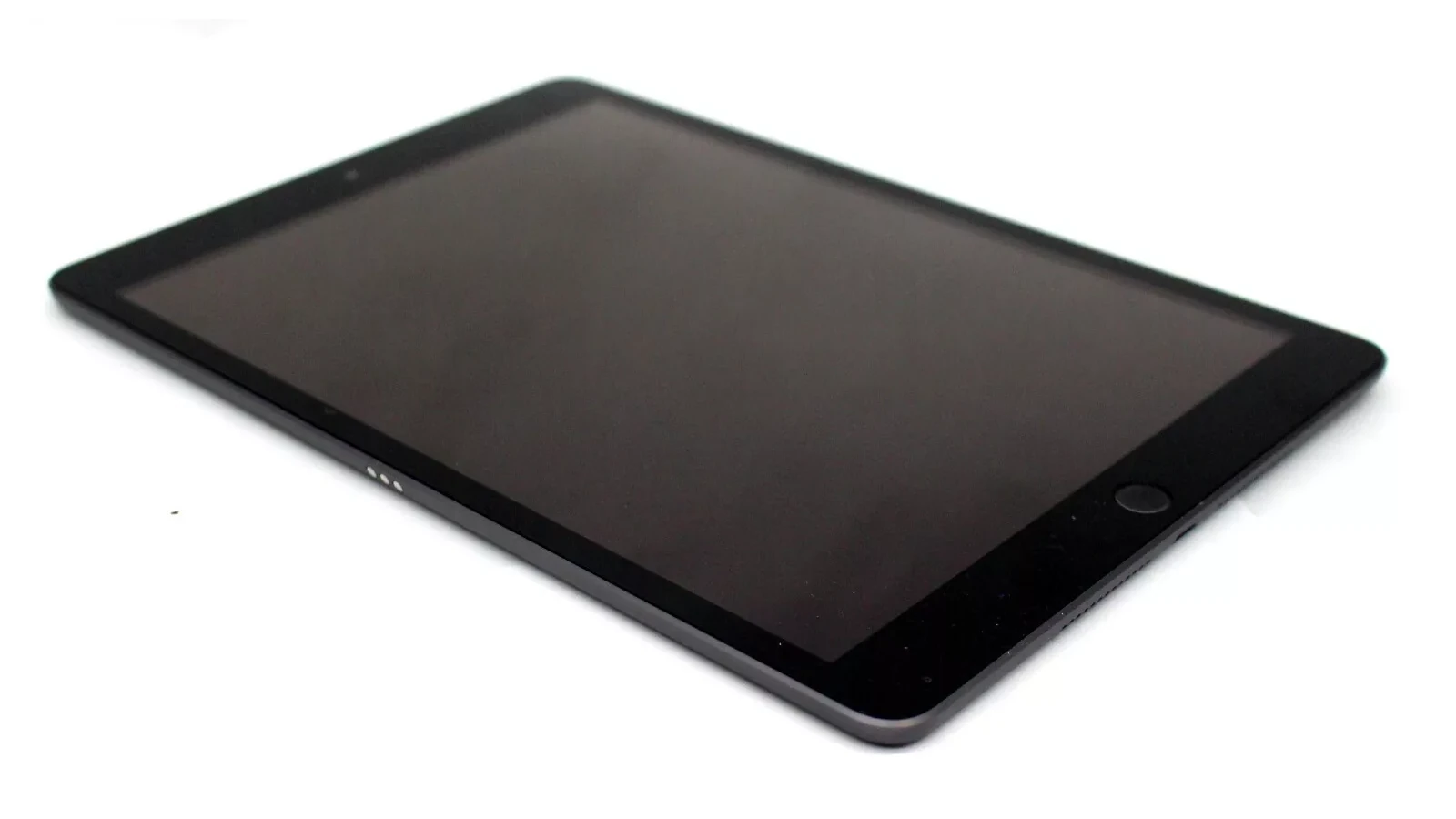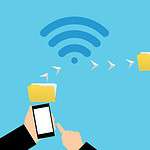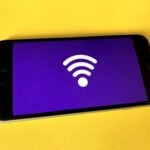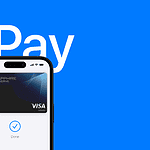Is your iPad screen blank and unresponsive? This can be frustrating, especially when you need to use your device right away. The good news is that most iPad issues that prevent it from turning on have simple fixes you can try at home.
To fix an iPad that won’t turn on, first check if it needs charging by connecting it to a power source for at least an hour, then try a force restart by pressing and holding both the top and Home buttons until the Apple logo appears. If these steps don’t work, there might be deeper software or hardware problems that need attention, such as updating iOS or checking for physical damage to the charging port or screen.
Many iPad users panic when their device won’t power up, but in most cases, you won’t need to replace your tablet. The solutions in this article range from basic troubleshooting steps like checking your charger and cable to more advanced techniques like performing a hard reset if needed.
How to Fix an iPad That Won’t Turn On
If your iPad won’t power on, don’t panic—it’s a common issue and often easy to fix. Whether your screen is black, frozen, or unresponsive, this guide walks you through all the steps to bring your iPad back to life.
🧰 Step 1: Check for Physical Damage or Charging Issues
Start with the basics before assuming there’s a major hardware failure.
- Inspect the iPad for signs of damage (cracked screen, water exposure, etc.).
- Check your charger and cable. Try a different Lightning or USB-C cable and power adapter that you know works.
- Plug the iPad into a wall outlet, not a computer.
- Let it charge for at least 30 minutes. You might not see any response right away if the battery is fully drained.
If you see the battery charging icon, let it charge until it turns on.
🔄 Step 2: Perform a Force Restart
A force restart can fix a frozen or black screen.
For iPads with Face ID or no Home Button:
- Press and release Volume Up.
- Press and release Volume Down.
- Press and hold the Top button until you see the Apple logo.
For iPads with a Home Button:
- Press and hold both the Home button and the Top (or Side) button at the same time.
- Keep holding them until you see the Apple logo.
🔌 Step 3: Try a Different Charging Setup
If the iPad still doesn’t respond:
- Use a different outlet, charger, or cable.
- Clean the charging port with a soft brush or toothpick to remove lint or debris.
- Avoid using third-party accessories that might not be certified by Apple (non-MFi).
🧑💻 Step 4: Connect to a Computer Using Finder or iTunes
If the screen stays black but you suspect the iPad has power:
- Connect your iPad to a Mac or Windows PC.
- Open Finder (macOS Catalina or later) or iTunes (older macOS or Windows).
- Put your iPad into Recovery Mode:
- Follow the same steps as a force restart, but continue holding after the Apple logo appears.
- Release when you see the Recovery Mode screen (cable pointing to a laptop).
- On the computer, choose Update (not Restore) to reinstall iPadOS without erasing data.
🔄 Step 5: Restore via Recovery Mode (Last Resort)
If updating doesn’t work, you may need to restore the iPad:
- Follow the steps above to get into Recovery Mode.
- This time, select Restore instead of Update.
- Be aware: this will erase all data on the device. Only do this if you’ve tried everything else.
🔧 Step 6: Contact Apple Support
If your iPad still won’t turn on after all of the above:
- Your iPad may have a hardware problem like a failed logic board, display, or battery.
- Visit an Apple Store or contact Apple Support.
- If under warranty or AppleCare+, you may be eligible for a free repair or replacement.
📝 Additional Tips
- If your iPad was exposed to water or extreme temperatures recently, allow it to return to room temperature before attempting to power on.
- iPads left unused for months may take a long time to show any signs of charging.
By following these steps, most users can get their iPad working again. If nothing works, Apple-certified service is your next best step.
Key Takeaways
- Charge your iPad for at least an hour and try a force restart by holding both the top and Home buttons.
- Check for damaged charging equipment including frayed cables and dirty ports.
- If basic fixes fail, try a hard reset or get professional help from an Apple Store.
Preliminary Checks
Before diving into complex troubleshooting, performing some basic checks can often solve your iPad power issues quickly. These initial steps help determine whether you’re dealing with a simple charging problem or something more serious.
Understanding iPad Power Issues
When your iPad won’t turn on, it doesn’t always mean it’s broken. Several common issues might be causing the problem. A frozen screen can make your iPad appear dead even when it’s still working.
Sometimes the iPad’s operating system crashes, making it unresponsive. This happens to many users and is often fixable without repair.
Hardware problems might also prevent your iPad from starting. These include:
- Damaged power button
- Faulty charging port
- Internal component failure
- Water damage
Pay attention to any warning signs before your iPad stopped working. Did it show low battery warnings? Was it running hot? These clues help identify the issue.
Ensuring Charge iPad Before Use
Always check if your iPad simply needs charging. Many “dead” iPads are just completely drained. Connect your iPad to a power source for at least 30 minutes before trying again.
Use these charging tips for best results:
- Try different chargers and cables to rule out faulty accessories
- Check for debris in the charging port that might block connection
- Connect directly to a wall outlet instead of a computer USB port
The charging screen should appear within a few minutes if your battery was completely drained. If you see a red empty battery icon, keep charging.
Not seeing any response after charging? Try a different wall outlet or power source. Sometimes the problem isn’t with your iPad but with your charging setup.
Basic Troubleshooting Methods
When your iPad won’t turn on, there are several quick fixes you can try before seeking professional help. These methods often solve common power issues and only take a few minutes to perform.
How to Perform a Hard Reset
A hard reset is often the first and most effective solution when your iPad won’t turn on. This process won’t erase any data on your device.
For iPads with a Home button, press and hold both the Home button and the top button at the same time. Keep holding until you see the Apple logo appear on screen, then release both buttons.
For iPads without a Home button, follow these steps:
- Press and quickly release the volume up button
- Press and quickly release the volume down button
- Press and hold the top button until the Apple logo appears
If your iPad still doesn’t respond after the hard reset, try connecting it to a charger. Leave it plugged in for at least 15-20 minutes before attempting another reset.
Checking for Black Screen or Apple Logo Issues
Sometimes an iPad appears to be off but is actually stuck on a black screen or frozen on the Apple logo.
For black screen issues:
- Check the brightness level – it might be turned all the way down
- Look closely at the screen in a dark room – you might see faint images
- Connect your iPad to a computer to see if it’s recognized by iTunes or Finder
For Apple logo freezes:
- If your iPad is stuck showing the Apple logo, a forced restart (using the steps above) often resolves this issue
- If the Apple logo appears and disappears repeatedly, connect your iPad to a computer and try to restore it through iTunes or Finder
In some cases, these issues indicate deeper hardware problems that require professional repair.
Software-Related Solutions
Many iPad issues that prevent powering on are actually software problems rather than hardware failures. These can often be fixed without professional help using the right troubleshooting steps.
Updating iOS Software to Latest Version
Running outdated iOS versions can cause your iPad to freeze or fail to turn on. Apple regularly fixes bugs with new updates that improve stability and performance.
To check if your iPad needs an update (when you get it working):
- Connect to Wi-Fi
- Go to Settings > General > Software Update
- If available, download and install the update
If your iPad won’t turn on to perform the update, connect it to a computer with iTunes or Finder. The computer might recognize your device and offer to update it.
Keeping your iOS updated prevents many common software issues that cause freezing or failure to boot. Updates also add security patches that protect your device.
Identifying and Resolving Software Glitches
Software glitches often cause iPads to appear dead when they’re actually stuck in a frozen state. The most effective fix is a force restart.
For iPads with Home buttons:
- Press and hold both the Home and top buttons at the same time
- Keep holding for 10-15 seconds until the Apple logo appears
- Release both buttons when you see the logo
For newer iPads without Home buttons:
- Press and quickly release the Volume Up button
- Press and quickly release the Volume Down button
- Press and hold the Top button until you see the Apple logo
If your iPad had been showing the low battery icon before shutting down, let it charge for at least one hour before trying again.
Utilizing iTunes or Finder for iPad Restore
When simpler fixes fail, restoring your iPad through iTunes or Finder (on Mac) can resolve deeper software issues. This process reinstalls iOS completely.
- Connect your iPad to a computer
- Open iTunes (Windows/older Macs) or Finder (newer Macs)
- While connected, force restart your iPad using the steps above
- Keep holding buttons until you see Recovery Mode screen
- Choose “Restore” when prompted
This process erases all data on your iPad, so make sure you have a backup. After restoration completes, you can set up your iPad either as new or restore from a previous backup.
If the normal restore doesn’t work, try putting your iPad in DFU (Device Firmware Update) mode, which is a deeper recovery state for more serious software issues.
Advanced Repair Techniques
When regular fixes don’t work, more technical solutions can bring your iPad back to life. These methods might seem complex but can solve stubborn problems that simpler approaches can’t fix.
Entering Recovery Mode and iOS System Recovery
Recovery Mode is a powerful tool when your iPad refuses to turn on. To enter Recovery Mode, connect your iPad to a computer with iTunes or Finder. Then press and quickly release both volume buttons in sequence, followed by holding the top button until the recovery screen appears.
Once in Recovery Mode, you’ll see a computer and cable icon on your iPad screen. At this point, iTunes or Finder will detect your device and offer options to Update or Restore.
Choose “Update” first, as this tries to reinstall iOS without erasing your data. This process takes about 15 minutes. If Update fails, you’ll need to try Restore.
Note: Make sure your computer has the latest version of iTunes or macOS for this process to work properly.
Performing Factory Reset and Data Backup
Before performing a factory reset, try to back up your data if possible. If your iPad turns on briefly, quickly connect to iTunes or iCloud to create a backup.
To factory reset through iTunes:
- Connect your iPad to a computer
- Open iTunes or Finder
- Select your device when it appears
- Click “Restore iPad”
- Confirm the action when prompted
This process erases everything and reinstalls iOS. After completion, you can set up your iPad as new or restore from a backup if available.
Factory reset should be your last resort before seeking professional help. It will fix software issues but won’t repair hardware problems.
Using TunesKit iOS System Recovery for Advanced Fixes
TunesKit iOS System Recovery is a third-party tool that can fix various iPad issues without data loss. This software can address problems like:
- Black/white screen issues
- Boot loop problems
- System crashes
- Recovery mode stuck situations
To use TunesKit:
- Download and install the program on your computer
- Connect your iPad with a USB cable
- Select “Standard Mode” to preserve data
- Follow the on-screen instructions to download firmware
- Let the software repair your device automatically
The Standard Mode fixes most issues without data loss, while Advanced Mode handles more serious problems but erases your data. TunesKit works when iTunes fails and offers a more user-friendly interface.
Always download such tools from official websites to avoid malware or fake programs that could further damage your device.
Hardware Issues Assessment
When your iPad won’t turn on, it’s important to check for potential hardware problems that might be causing the issue. Physical damage and battery health are two critical areas to examine before seeking professional repair services.
Investigating Physical Damage and Hardware Malfunctions
Start by carefully inspecting your iPad for visible physical damage. Look for cracked screens, dents, or liquid damage indicators that have turned red. These signs often point to internal hardware issues.
Check the charging port for dirt, lint, or debris that might prevent proper connection. Use a flashlight to see inside the port and gently clean it with a soft-bristled brush if needed.
Test your charging cable and adapter with another device. Faulty charging accessories can make it seem like your iPad has hardware problems when they’re just not delivering power properly.
Listen for unusual sounds when attempting to turn on your device. Clicking or buzzing noises might indicate component failure on the logic board.
Try connecting your iPad to a computer to see if it’s recognized. If iTunes or Finder detects your device, the screen might be the problem rather than the entire iPad.
Exploring Battery Health and Replacement Options
A dead battery is often the reason iPads won’t power on. Charge your device for at least 30 minutes using the original cable and adapter before trying to turn it on again.
Watch for charging indicators. If you see a battery icon when plugging in your iPad, the battery can still receive power but might need more charging time.
The battery might be too depleted to show charging signs immediately. Leave it connected for 1-2 hours, as extremely drained batteries need extended charging before showing any response.
Older iPads (3+ years) often experience battery degradation. If your iPad only works when plugged in, the battery likely needs replacement.
Apple offers battery replacement services at their stores and authorized service providers. Third-party repair shops can also replace batteries, often at lower costs but with varying quality levels.
Consider the device’s age before investing in battery replacement. For very old models, upgrading to a new iPad might be more cost-effective than repairing.
Professional Assistance
When self-troubleshooting fails to revive your iPad, professional help is the next logical step. Apple offers several options for getting expert assistance with devices that won’t turn on.
Contacting Apple Support for iPad Issues
If your iPad still won’t turn on after trying basic troubleshooting, contact Apple Support for specialized help. You can reach them through multiple channels:
- Phone: Call Apple’s direct support line for immediate assistance
- Online chat: Connect with a technician through the Apple website
- Apple Support app: Download on another iOS device to schedule calls
- Twitter: Message @AppleSupport for basic guidance
Before contacting support, have your iPad’s serial number ready. You’ll find this on the original packaging or in your Apple account. Also note any error messages you’ve seen and what troubleshooting steps you’ve already tried.
Support agents may guide you through additional restart procedures or suggest using recovery mode to restore your device.
Options and Considerations for Apple Store Repair
Taking your iPad to an Apple Store or authorized service provider offers hands-on professional help. Schedule an appointment with the Genius Bar to avoid long waits.
Repair options typically include:
| Service Type | Timeframe | Cost |
|---|---|---|
| In-store diagnosis | Same day | Free |
| Battery replacement | 1-5 days | $99-$149 |
| Hardware repair | 3-5 days | Varies by model |
If your iPad is under AppleCare+ warranty, many repairs might be covered. Out-of-warranty repairs can be costly, sometimes approaching the price of a new device.
Before visiting, back up your data if possible and disable Find My iPad if you can access your device. Technicians will need your Apple ID password if restoration is required.
Preventative Measures and Maintenance
Taking care of your iPad through regular maintenance can help prevent many issues that might cause it to stop working. These simple habits can extend your device’s life and keep it running smoothly.
Avoiding Overheating and Ensuring Proper Ventilation
iPads can get hot during heavy use or when charging. Overheating is a common reason why an iPad might shut down or refuse to turn on.
Never leave your iPad in direct sunlight or in a hot car. This can damage the battery and internal components permanently.
Use your iPad on hard surfaces rather than on beds, pillows, or blankets that can block air flow. These soft surfaces trap heat and prevent proper cooling.
Remove any thick protective cases when charging or using demanding apps. Some cases can act as insulators, keeping heat trapped inside.
If your iPad feels unusually warm:
- Close all apps running in the background
- Turn on Airplane Mode temporarily
- Let it cool down in a shaded, room-temperature area
- Avoid using it while charging if it’s already hot
Regularly Updating iOS and Managing iPad Storage
Keeping your iOS software updated is crucial for preventing system failures. Apple regularly fixes bugs that might cause startup problems.
Turn on automatic updates by going to Settings > General > Software Update > Automatic Updates. This ensures you always have the most stable version of iOS.
Check your storage space regularly. A nearly full iPad can become sluggish or unstable. Go to Settings > General > iPad Storage to see what’s using up space.
Delete unused apps and clear Safari browsing data periodically. Photos and videos often take up the most space, so consider using iCloud Photos or backing them up elsewhere.
Perform a restart once a week to clear temporary files and refresh system resources. This simple habit can prevent many common iPad problems before they start.
Frequently Asked Questions
iPads can sometimes stop working for various reasons. Here are common issues and quick fixes for when your iPad won’t respond or turn on.
What steps can I take if my iPad’s screen is black and it won’t turn on?
First, check if your iPad needs charging. Connect it to a power source using the original charger and cable. Let it charge for at least 30 minutes.
If charging doesn’t help, try a force restart. This often fixes minor software glitches that might prevent your iPad from turning on.
Look for any physical damage that could affect performance. Cracked screens or water damage might require professional repair.
How can I force restart an unresponsive iPad?
For iPads with a Home button, press and hold both the Top button and Home button at the same time until you see the Apple logo appear, then release both buttons.
For iPad Pro models without a Home button, press and release the Volume Up button, press and release the Volume Down button, then press and hold the Top button until the Apple logo appears.
This process takes about 10-15 seconds and won’t erase your data.
What should I do if my iPad is frozen and doesn’t respond to swipes or taps?
Try force restarting your iPad using the method described above. This often resolves freezing issues caused by software glitches.
If your iPad keeps freezing, check for software updates. Outdated software can cause performance problems and freezing.
Consider freeing up storage space by removing unused apps and files. A nearly full iPad may become slow and unresponsive.
How do I restart an iPad if the power button is not functioning?
Use AssistiveTouch as an alternative. Go to Settings > Accessibility > Touch > AssistiveTouch and turn it on.
Once enabled, a floating button appears on screen. Tap it, select Device, then tap and hold Lock Screen until “slide to power off” appears.
For a complete restart without the power button, use the AssistiveTouch menu to power off, then connect your iPad to a charger to turn it back on.
What can cause an iPad Pro to remain off even when connected to power?
Battery depletion below critical levels can prevent immediate startup. Leave your iPad charging for at least an hour before trying to turn it on again.
Using damaged cables or incompatible chargers may prevent proper charging. Try different Apple-certified cables and adapters.
Hardware issues like damaged charging ports or battery failure might require professional service from an Apple Store or authorized repair center.
What measures can I take if my iPad is not waking up from sleep mode?
Try a force restart first as this often resolves sleep mode issues. Follow the instructions above based on your iPad model.
Check if your iPad needs a software update. Outdated iOS versions can sometimes cause sleep/wake problems.
If problems persist, try resetting all settings (Settings > General > Reset > Reset All Settings). This won’t delete your data but will return all settings to factory defaults.







